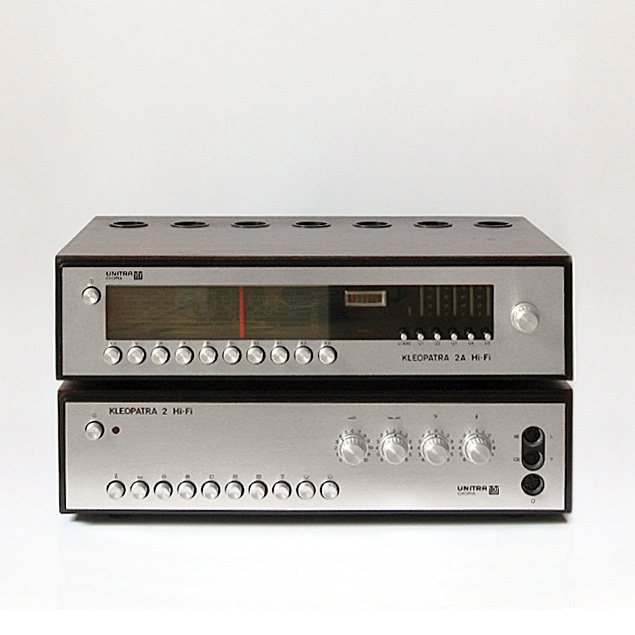Icons from the backstage
dr Agata Szydłowska
“Probably the most interesting part of design history are the objects’ biographies.”


Amplifier and tuner,
produced by: Unitra;
designed by: Grzegorz Strzelewicz
Among the designs that were created in the imagination and on drawing boards of the members of the Association of Industrial Designers, there are many memory boxes encompassing both individual and collective memories. They embody moments of Polish economic and social history. Alfa symbolizes time of political thaw of the 50s, when production of attractive consumption goods addressed at young people began. When tourism experienced boom and society eagerly engaged in amateur photography. Along the same lines Meisner together with Krzysztof Bruno, Jerzy Jankowski and Tadeusz Mathia designed Osa M50 scooter that was produced in 1959. Photography equipment for both amateurs and professionals designed by Wojciech Wybieralski in 70s, tells the story of emerging technologies, taste for professionally looking devices, about designer’s ethos to create things that solve problems, not only stylize things to be more attractive. Radio receivers designed in the late 70s by Grzegorz Strzelewicz are strictly linked to stories of Polish audiophiles, that put them among their books and relished jazz music in the best possible quality.
Many designs like visual information system of the first Warsaw underground line, designed in 1983 by Ryszard Bojar and Roman Duszek plays its role until this day. It harmonizes with ever changing context, similarly to the architecture which is also a part of design history. Therefore, instead of looking at objects placed in the white background, it is better to perceive them within their contexts of national history and individual biographies.
